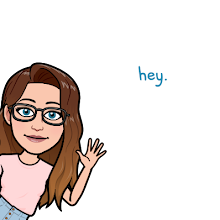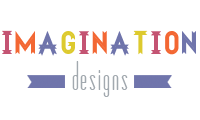The Brimstone Journals
by Ron Koertoge
Bibliography:
Koertoge, Ron. The Brimstone Journals. Massachusetts: Candlewick Press, 2004. Print.
Poetic Elements: Overall, the meaning of this book is an important one. There is an overwhelming amount of violence in and surrounding schools in our current day and age, and there are certain things that our students are exposed to, whether we like it or not. Unfortunately, I do believe that a teacher or librarian would have to be very careful about who they share these poems with, unless they plan to do a lot of editing or omitting. Personally, I could not share the majority of these poems with my students, and I would not want to. While a lot of it might be reality for some people, we must be careful of the texts that we use, especially with middle school students.
Overall, there are not a lot of poetic devices throughout the majority of the book. While there is the occasional figurative language, there is very little rhyme to be found, which does make it a bit more difficult to get into, especially for someone who struggles with finding enjoyment in poetry to begin with. I think that adding a bit more rhyme would have made the book flow a bit better, especially when the reader already has to differentiate between fifteen different characters and their voices. It is a lot to think about when poetry can already be a difficult genre.
Appeal: I do believe that this book will appeal to certain individuals, but it will most likely be individuals in their late teens, as I would be concerned with students at an earlier age reading some of the included information. Despite that, it does talk about topics that students become interested in, especially as they get older and realize everyone else is interested. There is also a sense of relate ability to most of the characters. They represent a wide spectrum of the students that one would see in their own school, certainly on the outside, so it is likely that students will find someone they relate to. It also gives them the opportunity to see that people are more than what they appear on the outside, just as they are. I do believe this could be eye-opening to some students, and may cause them to hold off judgement on people they know at their own school.
Overall Quality: Overall, I would say that this book is average, though certainly my least favorite of the three books I read and reviewed this module. When reading the textbooks and lectures, it was clear that students prefer light-hearted and humorous poems, and this book has the exact opposite. I do fear what that could do for students, as there were many poems that left me feeling down. In one sense, it was great that it could cause that emotion, but it was also not what I want when reading a book in verse. Some emotion is great, but I do not want to be that down.
Overall, I do think that the number of voices throughout the book was a bit excessive as well. I found it difficult to keep up with all of the different characters, their story lines, and their voices. It was a lot to keep up with for someone who already struggles with poetry. Ultimately, it was good that the voices were so different, and I loved the handwritten names to show a bit more personality. However, some of the characters were frustrating, and sometimes almost impossible, to decipher and understand which left me feeling frustrated on more than one occasion. I cannot imagine what this might cause for students.
The Poets: Koertoge is the only poet in this book, so in that sense it is very impressive that he is able to create a variety of voices throughout that makes it mostly believable that we are reading the journals of high school students. Of course, I do believe that there are many occasions when the writings do not seem like something someone that age would actually write, but for the most part, it is relate able. This is a collection of poems altogether that tell a story, as opposed to being an anthology with separate poets. It tells a full story in verse, but I do think that Koertoge struggles a bit to keep a good flow through the poetry in the book.
Layout: The layout is fairly similar throughout most of the book. One of the things that does vary is the length of the poems. Some of them are a full page in length, and then there will be others that only have one or two lines. I do think that this does help the story move along, but at some points the very brief poems seem pointless and do not necessarily add to the story of that character. I was disappointed that the format of all of the poems are mostly the same. There is not a lot of variation in the format or spacing of the words or poems, and instead it looks like something that would be typed in a word document. I do believe it would add some interest if the poems had looked more handwritten, and that the writing matched the character's name.
Spotlight Poem:
Kelli
When I told Damon I was home
but didn't feel like picking up,
he just freaked.
Yelled about how it made him
look when all the other guys knew
where their girlfriends were.
This is a poem that I would use as a warm up for my students as it is short and something they should be able to easily comprehend on their own. I would have it posted on the document camera when they came into class, and in their journal they would answer a question about who the narrator is. What can we assume about he?
For a follow-up activity, I would have students look at other poems from the character of Kelli and discuss what other things we can learn about her from the things she says in her poems. They could even complete a characterization activity where they would have to do a fair amount of inferencing about the character as they only get brief glimpses of her through her writing.

















No comments:
Post a Comment